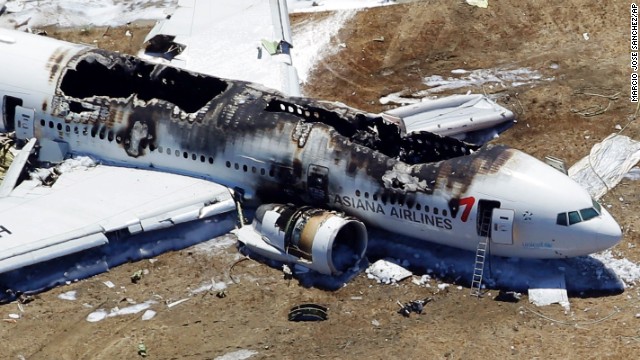 I have a number of people asking me as a pilot what could possibly have gone wrong to cause the crash in San Francisco yesterday. Well, it could have been any number of things. But it is possible to look at what actually happened and speculate on a few things that could cause it.
I have a number of people asking me as a pilot what could possibly have gone wrong to cause the crash in San Francisco yesterday. Well, it could have been any number of things. But it is possible to look at what actually happened and speculate on a few things that could cause it.
I have gone back and looked at the track of the flight on a site called FlightRadar24. What set up the problem, if the data is correct, was that the plane was doing a very fast descent to the final approach course and for some reason failed to slow the descent and get into a stabilized approach at the appropriate time. It was descending at 1,536 feet per minute when it was only 1,000 feet above the water which would mean that it was only 40 seconds away from hitting the water. Somewhere during that last minute, the pilot pulled the nose up sharply to stop the descent and try to make it to the runway. However, the sharp pullup without any additional power slowed the plane down to 85 knots while it was still falling at 768 feet per minute 75 feet above the water, and a stall warning went off only four seconds before the tail hit the breakwater. Normal final approach speed should have been around 135 knots with a roughly 600 feet per minute descent.
So what could have caused the rapid descent to go on too long? Any number of things. The altimeter could have malfunctioned or been set incorrectly so that the crew, over water, thought their altitude was higher than it was. The crew could have thought the autopilot was set to level them off at a higher altitude and not paid attention as they descended too low. Alternatively, they could have thought the autopilot would automatically join the ILS glide slope to level their altitude, when the glide slope was not functioning for that runway yesterday.
Any of these situations could have been caused by an equipment malfunction, but that is hard to explain with the redundancy built into these planes, and with at least two and possibly four pilots in the cockpit. What is worse, if the problem was noticed 20 or 30 seconds before impact, there should have been time to apply power, pull the nose up, get the gear up, and go around. However, at seven seconds before impact when someone called for a speed increase or at four seconds when the stall warning went off, there was no time left.
It has been pointed out that it is sometimes difficult to have good depth perception or judge altitude on a visual approach over water. But this plane was on short final, and every pilot knows what the runway should look like in that configuration. I have no idea what happened on the flight, but it is very difficult for me to understand why the problem was not noticed earlier.
 John Samford
John Samford